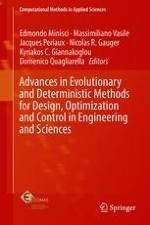This volume presents up-to-date material on the state of the art in evolutionary and deterministic methods for design, optimization and control with applications to industrial and societal problems from Europe, Asia, and America.
EUROGEN 2015 was the 11th of a series of International Conferences devoted to bringing together specialists from universities, research institutions and industries developing or applying evolutionary and deterministic methods in design optimization, with emphasis on solving industrial and societal problems.
The conference was organised around a number of parallel symposia, regular sessions, and keynote lectures focused on surrogate-based optimization in aerodynamic design, adjoint methods for steady & unsteady optimization, multi-disciplinary design optimization, holistic optimization in marine design, game strategies combined with evolutionary computation, optimization under uncertainty, topology optimization, optimal planning, shape optimization, and production scheduling.
